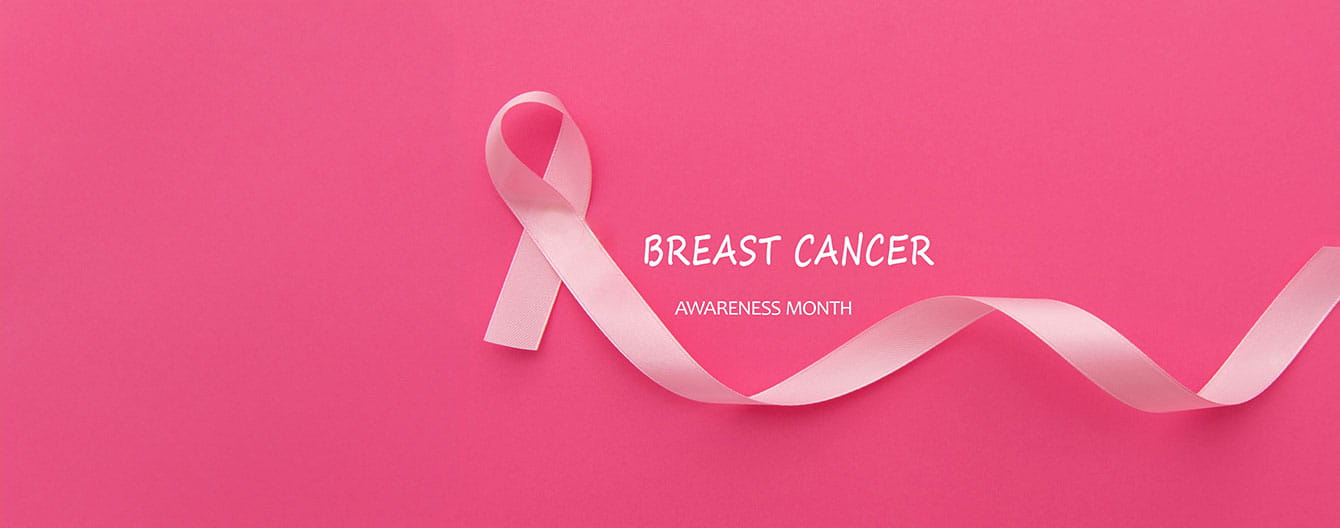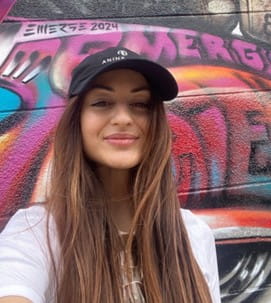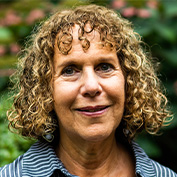Finding a New ‘C’ Word after Facing Breast Cancer: Confidence
Article
Clinical


Citeline Product Marketing Manager Claudia Maucieri shares her deeply personal experience of being diagnosed with breast cancer at only 31. Thanks to her doctor, who pushed for testing when results came back negative, the cancer was caught early. Read on to see how Claudia came to terms with the diagnosis — and came out with a stronger self-image.
There’s never a good time to be diagnosed with cancer, and for Citeline Demand Generation Manager Claudia Maucieri her breast cancer diagnosis came at a particularly inconvenient time. She was diagnosed in April 2022, and was scheduled to start her job at Citeline the following month.
Her doctor suggested she postpone her start date at Citeline until September, as the coming months would be filled with treatments, but Claudia decided to start as planned and see how things progressed. "Working was a way to focus my attention on something else," she says, adding that the key is to listen to yourself and your body. "I needed to stay active and keep moving forward."
And she says her new coworkers “were amazing, very supportive. I think they helped me a lot going through that.”
 Claudia Maucieri
Claudia Maucieri
Now 33, Claudia was only 31 at the time of her diagnosis. She is eager to share her personal story so that others — patients, caregivers, and healthcare professionals alike — can gain a better understanding of the patient journey and ways to improve the patient experience.
However, Claudia is quick to downplay her own case, saying politely in her French-accented English that her story is not that special, since she was diagnosed at stage 1.
Her diagnosis is unique in terms of the fact she was diagnosed at such a young age. Although her family medical history included cancer, it did not include breast cancer.
Europa Donna, the European Breast Cancer Coalition, reports that an estimated 20% of breast cancer cases in Europe occur in women when younger than 50 years old, 33% occur at age 50–64, and the remaining cases in women older than 64.
According to a recent scientific report by the American Association for Cancer Research, more adults under age 50 have diagnosed with breast cancer over the past few decades. Air pollution and alcohol use are two factors that might be impacting this trend. From 2010 to 2019, cancer rates — particularly breast, thyroid, colon, and rectum — rose significantly in young people in their 30s.
According to the National Breast Cancer Foundation:
Claudia first noticed a change in her breast two months before her diagnosis, but she did not feel a lump. Actually, the timing of this discovery did work in Claudia’s favor, as she was in between jobs. She says if she had been working full time, she would not have prioritized making a doctor appointment.
So Claudia went to the doctor, who also did not feel any lump, but ordered an ultrasound. When her doctor re-examined her on the table prior to the ultrasound, her body was positioned differently than for the first exam, and this time the doctor could feel something in Claudia’s breast. The ultrasound detected that there was indeed a lump, and her doctor ordered a mammogram, which confirmed the findings.
Since there was still some uncertainty regarding whether the lump was benign or not, the doctor ordered an MRI. After reviewing the results, and still not completely reassured, the doctor decided to proceed with a biopsy. Claudia told no one throughout her ordeal. A week or two later, she was told the lump was benign.
But Claudia’s story doesn’t end here. The radiologist booked an appointment for Claudia with a breast surgeon to see if the mass should be removed anyway. When Claudia met with the surgeon, she recalls the doctor telling her she wasn’t happy with the clinical appearance and MRI results, and that she had concerns, despite the biopsy being benign. She convinced Claudia to undergo a macro biopsy, even though Claudia was set to go on vacation to Miami with friends just a few days later and wasn’t keen on dealing with another exam right before leaving. Claudia says her doctor would not relent: “‘I have doubts about the results, and I’d rather check again to be sure than leave us with uncertainty.’” With the doctor's persistence, Claudia had the second biopsy done two days before her trip.
“I was impressed by the doctor's kindness and professionalism. Without her, I most likely wouldn’t have pursued things further.”
The surgeon explained that if the biopsy result was positive, the lump would need to be removed. Because the surgeon’s schedule was already quite full, they booked a “just in case” date for surgery upon Claudia’s return from vacation (the only date free on the surgeon’s calendar). Claudia even booked an appointment with an anesthesiologist. “But I was like, I'm going to cancel it. You know, it's not going to be needed.”
Upon return from vacation, Claudia got a call from the doctor saying she needed to come in for a consult. She had no clue what was to come.
Claudia’s mother accompanied her to the doctor appointment, where she received her diagnosis of invasive ductal carcinoma (IDC) HR-positive, HER2-negative breast cancer. “I just remember the doctor saying, ‘Well, the results are not that good.’ Claudia recalls. But the doctor reassured her that that, from what they could see, it seemed her breast cancer was at a very early stage and likely not very aggressive.
“One piece of advice my doctor gave me, which I didn’t know before,” Claudia says, “is that it’s not necessarily the presence of a lump or a specific irregularity that you should be concerned about. We all have our own unique characteristics, shapes, and colors. But it’s the changes that really matter. If the appearance changes or a lump appears that wasn’t there before, that’s when you should consult a doctor. This means it’s important to know your body well in order to identify any changes.
“So, if I can offer a few small tips: Regularly examine yourself to become familiar with your breasts, which will help you notice any changes. Also, take a photo of your breasts — it can be difficult to remember if a small mark was already there or if the appearance of your breast tissue has changed.”
What Claudia found particularly difficult was being informed right away about all the possible treatments. The doctor mentioned the potential need for chemotherapy due to her young age. The doctor also gave her an informational booklet on breast cancer, and Claudia recalls thinking, "I wasn’t ready for this; I didn’t want to hear about it." But what Claudia found even more difficult than the diagnosis itself was the challenge of having to inform everyone around her. “I was afraid to inform my family and friends. I knew deep down that everything would be fine. Everything had aligned from the start for me to discover it early and receive the care I needed. I trusted the process, but I didn’t want to make my loved ones worry.”
She was diagnosed on April 19, had surgery two days later, and 10 days later started working at Citeline “as if nothing happened.”
Claudia had to wait for the results of the surgery to find out her treatment plan. She admits she was scared of undergoing chemotherapy and losing her hair. This time, she received the results over the phone and was relieved to know that she would require radiation followed by hormone therapy, but not chemo.
So, at the same time Claudia started her new job, she also began her radiation treatment. Each session lasted 20 to 30 minutes, and she had them daily for nearly two months. "I did my radiation sessions during my lunch break," she says, walking 15 to 20 minutes to and from the hospital for her weekday appointment.
“I was a bit emotional after my last radiation session," Claudia shares. "Seeing the same staff — doctors and nurses — every day for several weeks creates a sort of bubble you find yourself in,” she explains.
For Claudia, post-treatment was more difficult than the treatment itself as she had to face a new normal. During the first few months, she was surrounded by healthcare professionals checking in on her. After radiation, she was told to get back to her life; her follow-up appointment was not until six months later. “It was a strange feeling, with a certain fear of being on my own again.”
Immediately following her radiation treatments, Claudia began hormone therapy, a regimen of tamoxifen and Decapeptyl® that she must continue for a minimum of five years to prevent the cancer from recurring, which has temporarily thrown Claudia into early menopause.
“This whole experience shakes up your life, and you come out of it with new perspectives. Whether it’s learning to adapt to your new body or managing a treatment that subtly affects your daily life and disrupts things in the medium term,” Claudia says, adding that it’s important to talk about it and break the taboo around this topic that scares people.
Claudia also emphasizes the importance of community in this journey — feeling less alone, sharing experiences, and discussing bodily changes can provide immense comfort.
“What I take away from all of this,” Claudia says, “is that we each have our own story and our own struggles. It’s important to be compassionate because you never know what someone else is going through. I also learned the importance of listening to yourself, to your body, and trusting your intuition — no one knows you better than you do.”
And there’s a silver lining, too. Claudia says her experience as a breast cancer patient "gave me the confidence I felt I was lacking before, this sense that we are stronger than we think."
Read on for more first-person accounts from breast cancer patients, and another Citeline employee’s patient journey to find her own rare disease diagnosis.

Darcy Grabenstein
Director of Content Strategy and Thought Leadership | Citeline
Darcy is the Director of Content Strategy and Thought Leadership for Citeline. A journalist by training, she has more than 30 years of experience in marketing, advertising, and public relations.